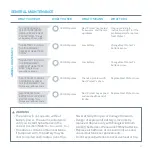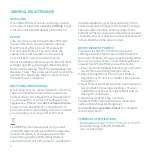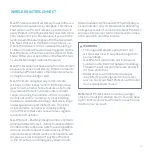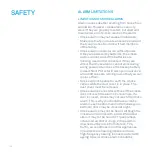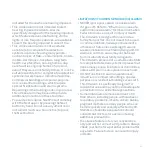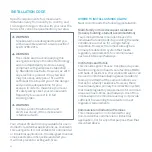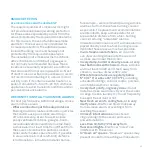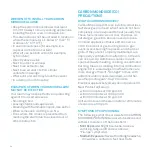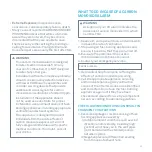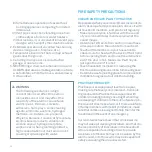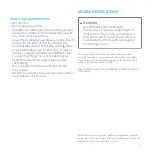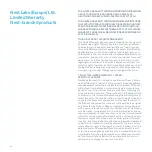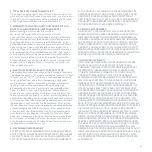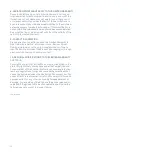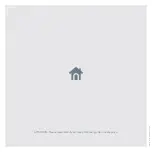
25
•
Extreme Exposure:
Unconsciousness,
convulsions, cardiorespiratory failure, death
• Many cases of reported CARBON MONOXIDE
POISONING indicate that while victims are
aware they are not well, they become so
disoriented that they are unable to save
themselves by either exiting the building or
calling for assistance Young children and
household pets are usually the first affected
WARNING
This carbon monoxide alarm is designed
to detect carbon monoxide from any
source of combustion It is NOT designed
to detect any other gas
Individuals with certain medical problems
should consider using detection devices
with lower COHb alarm capabilities and
consider warning devices that provide
audible and visual signals for carbon
monoxide concentrations of under 30 ppm
Installation of the apparatus should
not be used as a substitute for proper
installation, use and maintenance of fuel-
burning appliances, including appropriate
ventilation and exhaust systems
This apparatus is designed to protect
individuals from the acute effects of
carbon monoxide exposure It will not
fully safeguard individuals with specific
medical conditions If in doubt, consult
your doctor
WARNING
Actuation of your CO alarm indicates the
presence of carbon monoxide (CO), which
can KILL YOU
1 Keep calm and open all doors and windows to
increase the rate of ventilation
2 Stop using all fuel-burning appliances and
ensure, if possible, that they are turned off
3 Evacuate the premises if the carbon
monoxide alarm continues to sound
4 Contact your emergency services
5 Get medical help for anyone suffering the
effects of carbon monoxide poisoning
6 Call the appropriate appliance servicing
and/or maintenance agency so that the
source of the CO emissions can be identified
and corrected Do not use the fuel-burning
appliances again until they have been
checked and cleared for use by a competent
person, according to national regulations
THE FOLLOWING CONDITIONS CAN RESULT IN
TRANSIENT CO SITUATIONS
1 Excessive spillage or reverse venting of fuel-
burning appliances caused by:
I) Outdoor ambient conditions such as wind
direction and/or velocity, including high
gusts of wind; heavy air in the vent pipes
(cold/humid air with extended periods
between cycles)
II) Negative pressure differential resulting
from the use of exhaust fans
PHONE NUMBER:
WHAT TO DO IN CASE OF A CARBON
MONOXIDE ALARM
Summary of Contents for A0124
Page 1: ...Nest Protect Battery Smoke and carbon monoxide alarm User Guide Let s get started ...
Page 2: ...2 ...
Page 31: ...31 ...







